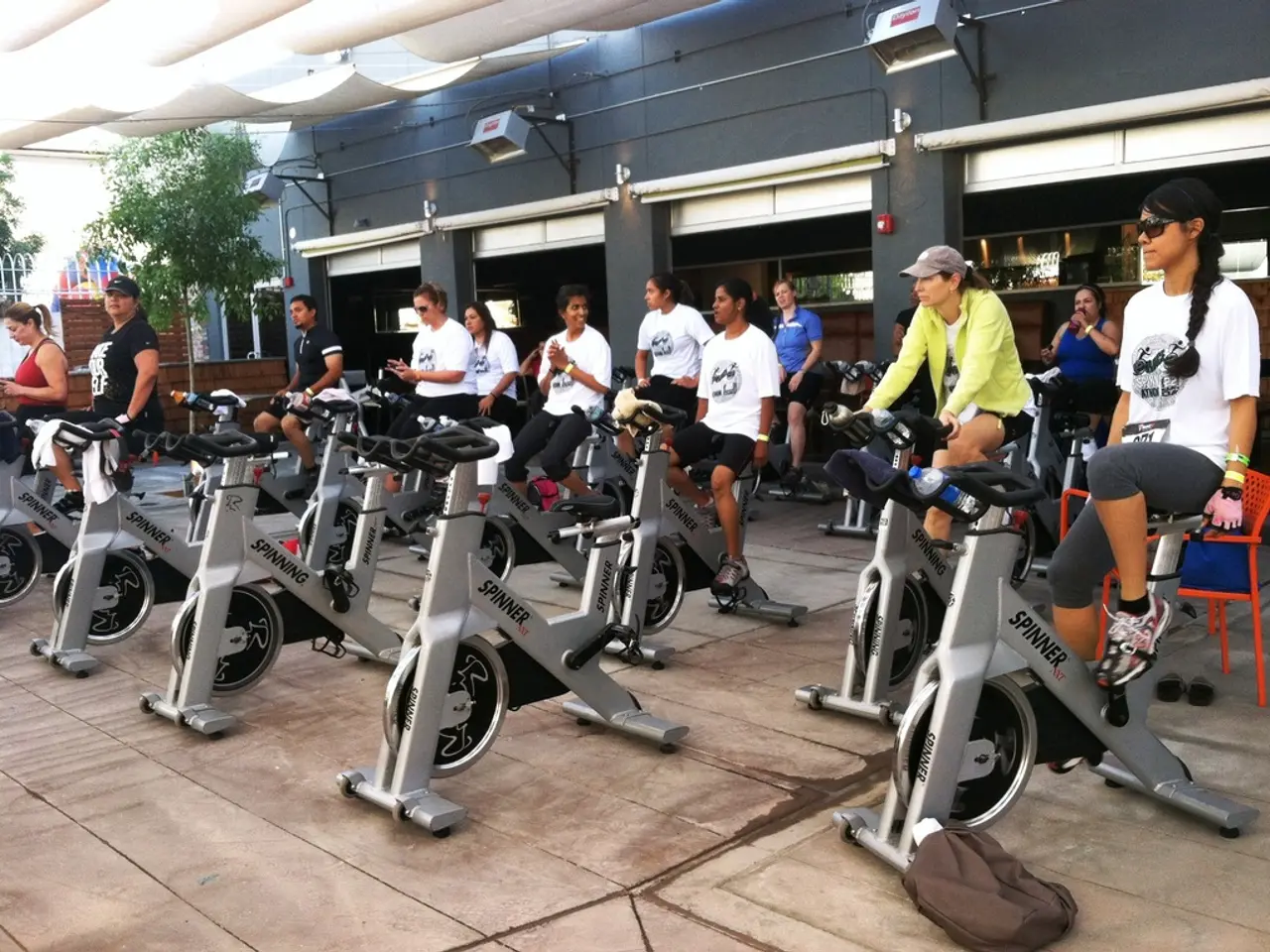Assessing Fitness Effectively: A Blueprint for Physical Wellness Without Resorting to Numerical Data
In a world where weight loss often seems synonymous with success, Mia has chosen a different path. She has decided to celebrate her fitness journey beyond the numbers on a scale, and her story is a testament to the power of embracing a holistic approach to health and wellness.
Mia recently hosted a "Non-Scale Victory" celebration to share and celebrate her personal achievements. This event was a testament to her newfound freedom from the scale and her focus on energy levels, clothing fit, strength gains, and mental clarity.
Tracking fitness progress without relying solely on a scale can be both effective and motivating. By monitoring these four key areas, individuals like Mia can gain a more comprehensive understanding of their progress.
**Energy Levels**
One way to measure energy levels is through activity monitoring. Track your daily activities and note any increases in endurance or stamina. This can be done with a fitness tracker or by simply logging your workouts. Setting specific performance goals, such as completing a certain number of workouts or increasing the intensity of your routine, can also indicate improved energy levels.
**Clothing Fit**
Paying attention to how your clothes fit is another tangible indicator of progress. As you lose fat or gain muscle, you may notice changes in how snugly or loosely your clothes fit. Regularly taking progress photos can also visually track changes in your body composition and muscle definition.
**Strength Gains**
Strength gains can be measured by tracking the weights you lift or the number of reps you complete over time. Gradually increasing these metrics is a sign of strength gains. Performance metrics like the number of push-ups you can do, the distance you can run, or how long you can hold a plank can also indicate increased strength and endurance.
**Mental Clarity**
Improved mental clarity often manifests as increased focus, better mood, and reduced stress. Using a mood journal to track changes in your mental state can help identify improvements in this area. Engaging in mindfulness practices like meditation or deep breathing exercises can also enhance mental clarity and provide a sense of well-being.
In addition to these methods, regular tape measurements, body fat composition scales, and paying attention to how you feel overall can also help track progress.
Mia's journey is a testament to the power of embracing a holistic approach to fitness. By celebrating non-scale victories, such as completing more push-ups or lifting heavier weights, she has found a deeper connection to her body and a new source of motivation.
Her story emphasises that progress isn't solely defined by numbers but by the joy of movement, the strength gained, and the mental clarity achieved. Surrounding oneself with a supportive community, setting realistic goals, and focusing on how one feels and what one can achieve can help stay motivated without the scale.
So, if you're looking to measure your fitness progress in a more meaningful way, consider adopting Mia's approach. Celebrate your non-scale victories, and let your energy levels, clothing fit, strength gains, and mental clarity be your guide.
- Mia's "Non-Scale Victory" celebration was a testament to her shift away from the scale and her emphasis on energy levels, clothing fit, strength gains, and mental clarity.
- Monitoring energy levels through activity tracking and setting specific performance goals can provide a more comprehensive understanding of fitness progress.
- Paying attention to how clothes fit and taking progress photos can serve as tangible indicators of body composition changes and muscle definition.
- Strength gains can be measurable through tracking weights lifted or reps completed over time, with gradual increases pointing to progress.
- Improved mental clarity, signified by increased focus, better mood, and reduced stress, can be closely monitored through regular mood journal entries.
- Engaging in mindfulness practices like meditation or deep breathing exercises can enhance mental clarity and overall wellness.
- In addition to these methods, regular tape measurements, body fat composition scales, and overall well-being can help track fitness progress.
- Embracing a holistic approach to fitness can lead to a deeper connection to one's body and a new source of motivation, as demonstrated by Mia's journey.
- To measure fitness progress in a more meaningful way, consider celebrating non-scale victories while focusing on energy levels, clothing fit, strength gains, and mental clarity, all while surrounding oneself with a supportive community and setting realistic goals.




